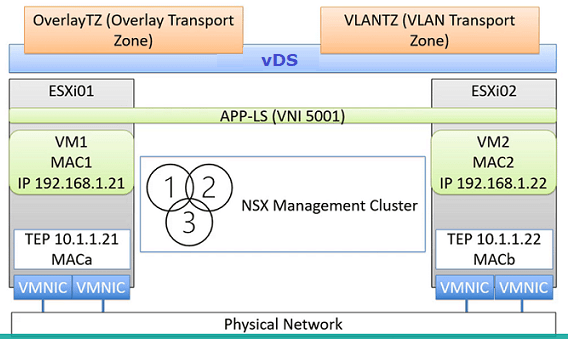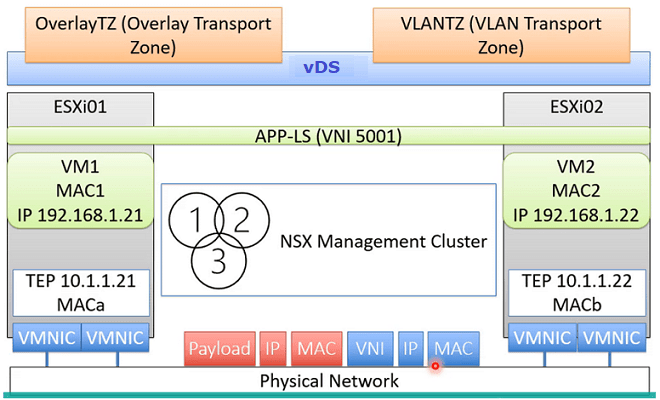Let’s discuss some important Networking Concepts that will be needed to understand NSX-T,
Overlay Networking Basics
- Creating a sort of connection between two endpoints, Leverage this connection to create an “Overlay Network” on top of the underlying physical infrastructure. This includes Routing, Switching and Security
- In Overlay Networking, the underlying physical infrastructure (Underlay Network) doesn’t have any idea about the Overlay Network, It’s totally isolated from Underlay.
- NSX-T uses a protocol called “Geneve” for Overlay Networking
What is GENEVE Protocol?
Generic Network Virtualization Encapsulation (Geneve) is a network encapsulation protocol created by the IETF in order to unify the efforts made by other initiatives like VXLAN and NVGRE, with the intent to eliminate the wild growth of encapsulation protocols.
- Used for Data Plane Communication in NSX-T
- Geneve works very similar to VXLAN
- Allows for 16M Network Segments (Can be created theoretically, but will hit other Network Limitations)
- Allows for Tunnelling without maintaining adjacencies
- Requires MTU Size to have a minimum of 1600 bytes MTU>1600
- GENEVE is a UDP Protocol, But Inner Header is TCP (Originate from VMs/Containers, etc.)
- When traffic flows from VM1 to VM2 (As shown below) additional Outer Header will be appended (TEPs details like Identify which TEP does that traffic needs to be sent to, Identity which VNI does that traffic belong to) before it reaches the physical Underlay Network
- NSX-T Controller Table maintains the MAC Table with associated TEP IP Address)
- If a VM itself need to use Jumbo Frame, configure MTU Size as 8900 (The N-VDS can’t fragment and reassemble the traffic)
TEP – Tunnel End Points – We will discuss what is Tunnel End Point in future lessons)
VNI – Virtual Network Identifier – We will discuss what is VNI in future lessons)

